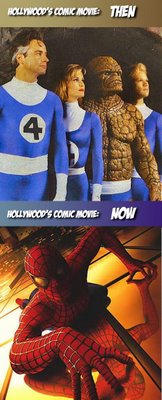The Legitimacy of Sequential Art: Part II - The Rest of What You Know is Also Wrong , or Readership and Comics

“In North America we have long had the hang-up that comics are only for kids. [That] a grown man who reads comic books must be a total freak, nerd, geek, fan-boy, loser, dweeb, social misfit, […] or butt-head.”
-Mark Groenewold
Without getting into a lengthy debate about first amendment rights, censorship and the Comic Book Legal Defense Fund, I would briefly like to discuss the demographics of comic book readers. Scott McCloud, author of Understand Comics and Reinventing Comics, sums up nicely popular conception of comic books, calling the medium “Crude, poorly-drawn, semiliterate, cheap, disposable kiddie fare.” The majority of non-comic readers (even, and sometimes especially former readers) still consider comics to be a medium primarily directed toward young readers. Scott Berg tried to challenge this conception in a Washington Post article from September 7th, 2001 entitled “Comic Books Grow Up.”
“It's easy enough to keep comic books stored away in this nostalgic closet, frozen in time, never to change or grow older. But if your impression of comics remains one of anatomically overcooked men and women POWing, BIFFing and BLAMming their way through a world full of loquacious and colorfully dressed bad guys -- surprise! The runt of American popular culture has grown up, and comics are now smarter, better and wiser than ever.”
Berg points out that, by the mid nineties, the maturation of the medium of comics was “a decades-old trend,” thanks to innovators such as Will Eisner. The medium, continued it’s evolution as “comics artists […] began to rapidly accelerate [… the trend ] of taking on more and more serious adult subjects and receiving more and more serious adult recognition.”
Dan Jurgens, a comics artist in both senses of illustration and writing, known for his work on several Superman titles, Justice League, Teen Titans, the Zero Hour mini-series, and the now defunct imprint, Tangent, of DC comics, was questioned about his work on the Marvel title Thor. In an interview by Richard Caponetti on Alvaro’s Comic Board.
RC: You matured the title considerably-fifteen year olds can still read the book, but they have to be smart fifteen year olds to really get it. Why was your time on the book the right time to do this?
DAN JURGENS: The older market is now the only market. We, as an industry, have given up on the younger market. So, what we did in Thor was not unique-it’s what the market is demanding right now. It is an older reader that we have right now.
Jurgens himself admitted regret that the younger audience is marginalized, if not segregated, by the industry at present, but recognized, as a contributor, the direction of the medium. Later in the interview, Jurgens comments that “we [as an industry] have abandoned the kids market, which breaks my heart. We all started as kids. I have kids . . . who don’t know a single kid in their entire school who reads comic books. And I can see why they don’t: Because we don’t give them a product!”
The industry itself has long since acknowledged, even as society blinks against the recognition, that the medium has shifted from youth to adult oriented. Readership, however traditionally conceived, is also no longer limited to the concept of singularly masculine audience, if this was ever actually the case.
The collegiate newspaper, The Carolinian, extrapolated information from a recent Diamond Distributors Reader’s Survey. The paper reported that the “average age of comics readers is 34 [years old]. 45 percent of respondents were college-educated, [and] 33 percent had [at least] finished highschool. Unfortunately, only 13 percent of respondents were female.” While the medium still is dominated by male readers, Berg also noted in the September 7th, 2001 Washington post article “the ever-increasing involvement of women in the creation and consumption of comics.”
...
Now that we have come to an understanding that comics are not kiddie fare, we can examine whether or not the medium consists solely of crude, poorly-drawn, semiliterate, cheap, disposable material or if it is in fact a legtimate medium.


